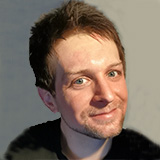The application of eye tracking for concussion measurement
Researchers are investigating how eye tracking technologies can be used to measure deficits in cognition, as part of a pitch-side concussion assessment.
With concussion increasingly acknowledged as a major issue in many contact sports, a strong focus has been placed on the ability to quickly identify and diagnose concussions.
Most people will recover from a concussion, however, multiple head injuries or improperly treated ones can lead to long-term problems, including chronic traumatic encephalopathy (CTE), a condition which can cause memory, mood, and thinking difficulties. Over time, CTE can also cause dementia.
Multiple ex-rugby players in the UK have been diagnosed with early-onset dementia, believed to be the result of CTE which is caused by multiple concussions from sports participation. Given there’s currently no way to diagnose CTE while a person is alive, being able to better diagnose concussions as soon as they happen may be important for preventing this condition from developing in the first place.
Quickly and accurately diagnosing a concussion when it happens means players can be treated more effectively. This may also one day help prevent neurodegenerative problems from developing. Concussion, presently, can be hard to diagnose and is often missed, especially where a structured evaluation by an expert clinician is not possible or available.
Dr Thom Wilcockson and his team aim reduce the risk of missing this type of injury at all levels of participation, but also provide an objective measure of whether athletes can continue playing or if they need substituting.
Research in focus
The effectiveness of eye movement measurements for patient diagnosis
Eye tracking allows psychologists to make broad distinctions between groups of participants. Therefore, it may be entirely possible to exploit these distinctions in order to create screening tools for potentially diagnosing various conditions.
These diagnostic techniques may have a number of advantages over existing techniques. However, in order to develop such screening tools it would be beneficial if eye tracking systems were easy to access and use. There are a number of ways to improve accessibility of eye trackers: affordability, transportation, ease of use.
Dr Thom Wilcockson has explored how HCI (Human Computer Interaction) eye trackers can be used for diagnostic purposes of psychological conditions.
Dr Wilcockson has also demonstrated how eye movements could be measured using webcams instead of relying upon expensive lab-based eye trackers, enabling eye movement to be measured outside of clinical settings to provide immediate eye movement diagnosis of underlying conditions in any environment.
- Wilcockson TDW. (2017). Using eye trackers as indicators of diagnostic markers: Implications from HCI devices. Smart Innovation, Systems and Technologies. (pp. 308-315). Springer, Cham. DOI: 10.1007/978-3-319-59424-8_29
Related research
- Zhang Y, Wilcockson TDW, Kwang IK, Crawford TJ, Gellersen H, Sawyer P. (2016). Monitoring Dementia with Automatic Eye Movements Analysis. In Czarnowski et al. (eds.) Proceedings of Intelligent Decision Technologies 2016, Smart Innovation, Systems and Technologies 57. DOI: 10.1007/978-3-319-39627-9_26
- Wilcockson TD, Mardanbegi D, Xia B, Taylor S, Sawyer P, Gellersen HW, Leroi I, Killick R, Crawford TJ. (2019). Abnormalities of saccadic eye movements in dementia due to Alzheimer’s disease and mild cognitive impairment. Aging (Albany NY), 11(15), 5389. DOI: 10.18632/aging.102118
Meet the expert
Dr Thom Wilcockson is a Lecturer in Psychology in the School of Sport, Exercise and Health Sciences at Loughborough University. He is currently aiming to develop hardware and/or software which can be utilised at pitch-side for the measurement of eye movements in concussion, as well as developing the use of eye tracking in the lab to detect the precise cognitive processes that are affected in disorders of the brain (e.g. Alzheimer’s disease, schizophrenia, substance abuse). His research includes various forms of neurodegenerative diseases, substance abusers, and learning deficits, with the aim of understanding the neuroscience of attention and cognitive control.
